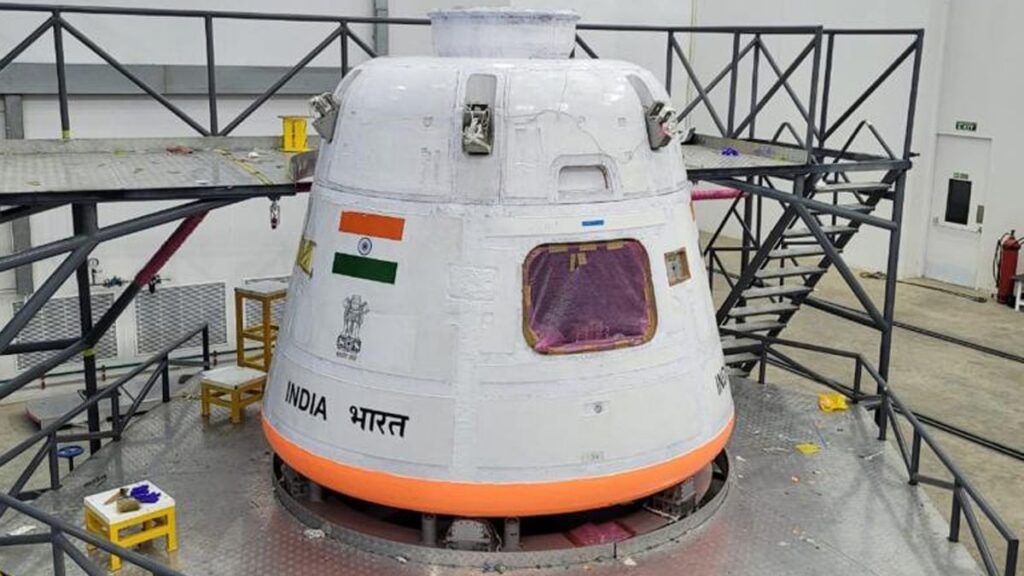✍️ Introduction
India is on the verge of joining an elite group—sending humans into space using its own rockets. The Gaganyaan mission, developed by ISRO, promises to launch Indian astronauts into Low Earth Orbit by Q1 2027. But is India truly ready for a safe, successful human spaceflight?
🧾 What is Gaganyaan?
Gaganyaan is India’s first crewed spacecraft designed to carry two to three astronauts on a week-long journey into space. Backed by the LVM3 rocket and robust safety systems, it marks India’s move from satellite launches to human spaceflight. Before crewed missions, ISRO will conduct three uncrewed test flights (G1–G3) and one abort test.
🧠 Context
-
Uncrewed tests start Q4 2025, with crewed flight by early 2027
-
Astronaut training escalates in 2026 at Bengaluru’s centre
-
PM Modi hailed recent Axiom-4 mission with Shubhanshu Shukla as the “first chapter” toward Gaganyaan
The program includes notable mission support systems, robust international collaboration, and aims to land India among the few nations capable of independent human spaceflight.
✅ Arguments in Favour (YES – Gaganyaan Is Vital for India)
-
✅ Makes India a spacefaring nation—Only U.S., Russia, China have done it
-
✅ Builds indigenous technology—Crew module, escape systems, human-rated rockets by ISRO/DRDO/HAL
-
✅ Advances astronaut training—India’s first home-trained astronauts, learning Maa-dock and survival protocols
-
✅ Hands-on learning in microgravity—Vital for future space and lunar missions, experiments on Vyommitra
-
✅ Strengthens space diplomacy—International cooperation boosts India’s global standing.
-
✅ Inspires science education—High-profile missions motivate youth to pursue STEM
-
✅ Boosts ecosystem for satellite and station tech—Lays groundwork for Bharatiya Antariksha Station by 2035
-
✅ Supports strategic autonomy—Reduces dependence on foreign launches.
-
✅ Stimulates space economy—Fees, investments, job creation follow big missions.
-
✅ Enables research in health and earth science—Crewed missions allow real-time studies critical for future missions.

Also Read: Is Starlink a Game‑Changer for India’s Rural Connectivity?
❌ Arguments Against (NO – There Are Significant Challenges)
-
❌ Safety risks are high—Lives are at stake; even small failures are unacceptable.
-
❌ Repeated delays raise doubts—From 2022 to 2027, the timeline has slipped
-
❌ Resource-intensive project—₹20,000+ crore budget may divert funds from other national needs .
-
❌ Technical complexity remains—Human-rated rockets and escape systems are still unproven.
-
❌ Infrastructure gaps—Ground stations, recovery systems, and training setups must scale fast .
-
❌ Risk of mission failures—Even uncrewed missions could fail, hurting morale and trust.
-
❌ International competition rising—China, private firms already sending crews to orbit.
-
❌ Lack of public urgency—Support dwindles if India faces poverty or other pressing issues.
-
❌ Limited return on investment—Communicating real benefits to masses can be hard.
-
❌ Environmental footprint—Launches impact local ecology and global emissions.
🔚 Balanced Conclusion
Gaganyaan is a bold, strategic leap for India — advancing technology, national pride, youth inspiration, and global stature. But it’s also a high-stakes challenge: safety, timeline, budget, and public buy-in must be managed carefully. If executed well, Gaganyaan can mark the beginning of sustained human space exploration for India.
📌 Quick Summary
-
Yes: Positions India as a fully capable space agency, drives innovation and science.
-
No: Faces delays, high costs, risks, and must justify its value to society.
-
Verdict: A game-changing mission—but must be paced with caution, transparency, and outreach.
❓ FAQs
Q1. When is the first crewed flight of Gaganyaan expected?
Scheduled for Q1 2027, following uncrewed test flights in 2025–26
Q2. What have been the delays in the mission?
Initially planned for 2022; now delayed to 2027 due to test and safety requirements
Q3. How does Gaganyaan benefit India beyond pride?
It builds human-rated space tech, creates jobs, inspires youth, and lays foundation for future space stations and lunar missions .

